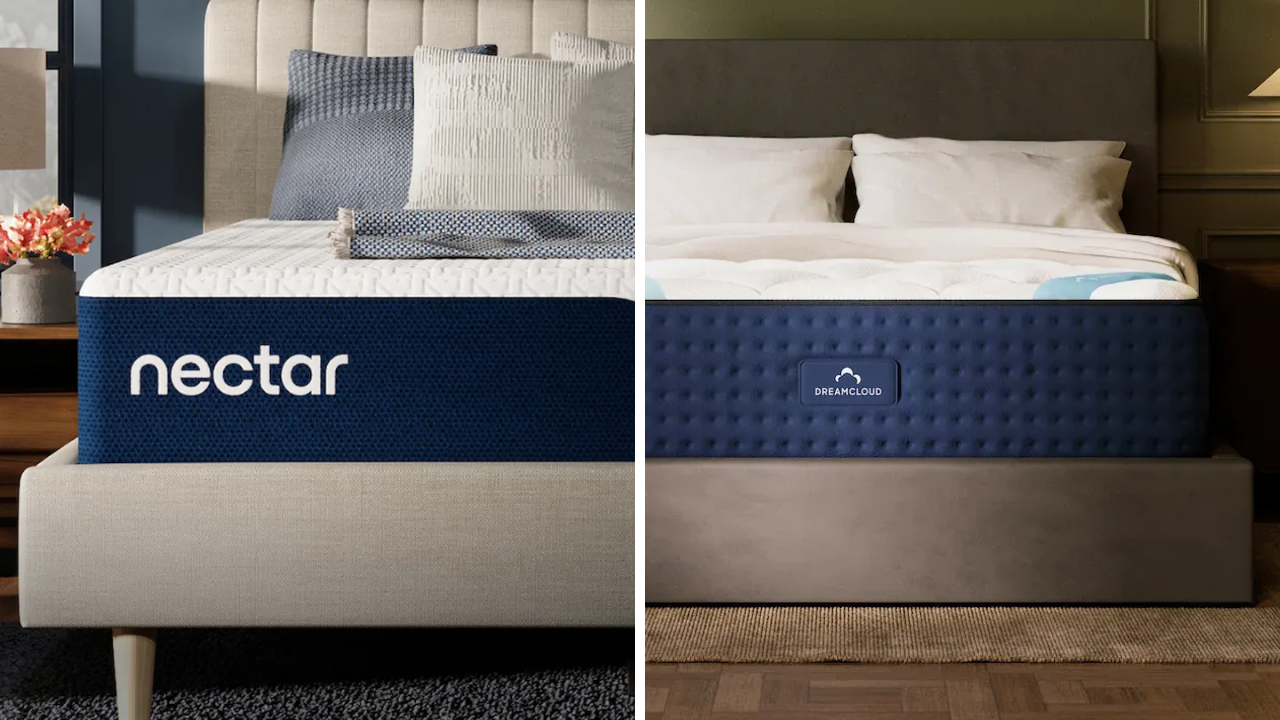iPhone 14 vs. Galaxy S22 vs. Pixel 7 — which phone has the best display?
We compare the displays of the iPhone 14, Galaxy S22 and Pixel 7
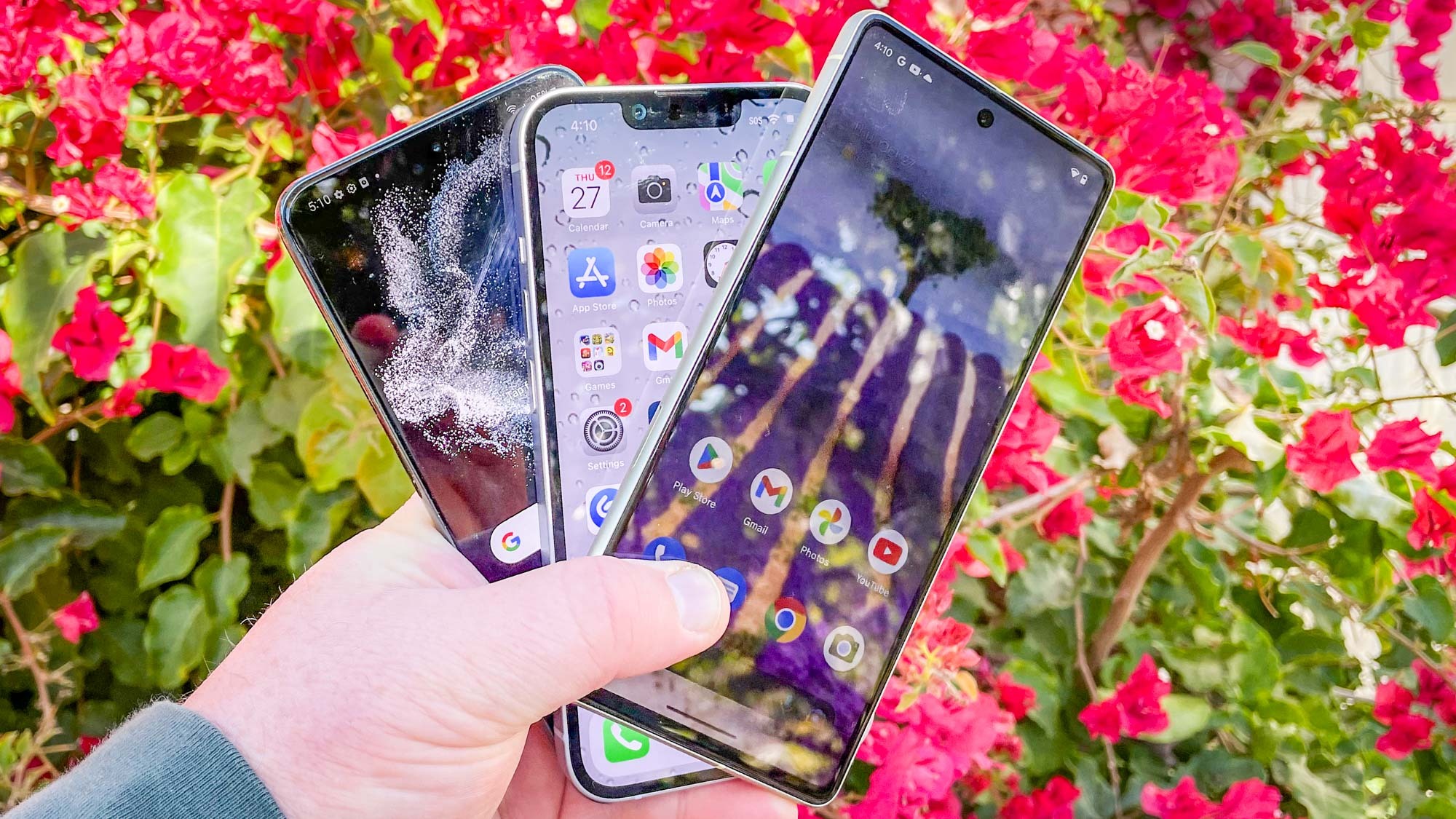
Cameras get the attention and battery life gets the scrutiny, but don't under-estimate the importance of displays when picking a smartphone. Most of the time you spend interacting with your handset is going to be spent staring at its screen, so you'll want to consider which flagship phone has the best display.
There's never been a better time to consider the answer to that question. Both Apple and Google have released their fall flagship phones, joining Samsung's Galaxy S22 family from earlier this year. We can stack the iPhone 14, Google Pixel 7 and Galaxy S22 side by side by side to compare and contrast their respective displays.
For this particular display showdown, we're considering the entry-level model for each phone — that's the $799 iPhone 14, $799 Galaxy S22 and the $599 Pixel 7. Each phone maker offers devices with bigger screens and more premium features, but those models also cost more, and we wanted to concentrate on the best phones that the most people are likely to buy.
We've had a chance to test and review the iPhone 14, Galaxy S22 and Pixel 7, paying particular attention to their screens. Here's which flagship phone had the standout display across a variety of different categories.
iPhone 14 vs. Galaxy S22 vs. Pixel 7: Display size
One of these phones is noticeably taller than the others. While the iPhone 14 and Galaxy S22 offer 6.1-inch screens, you get a 6.3-inch panel with the Pixel 7. An extra 0.2 inches of work space may not seem like much, but the lay the phones next to each other and the Pixel 7 is noticeably taller than its rival phones.
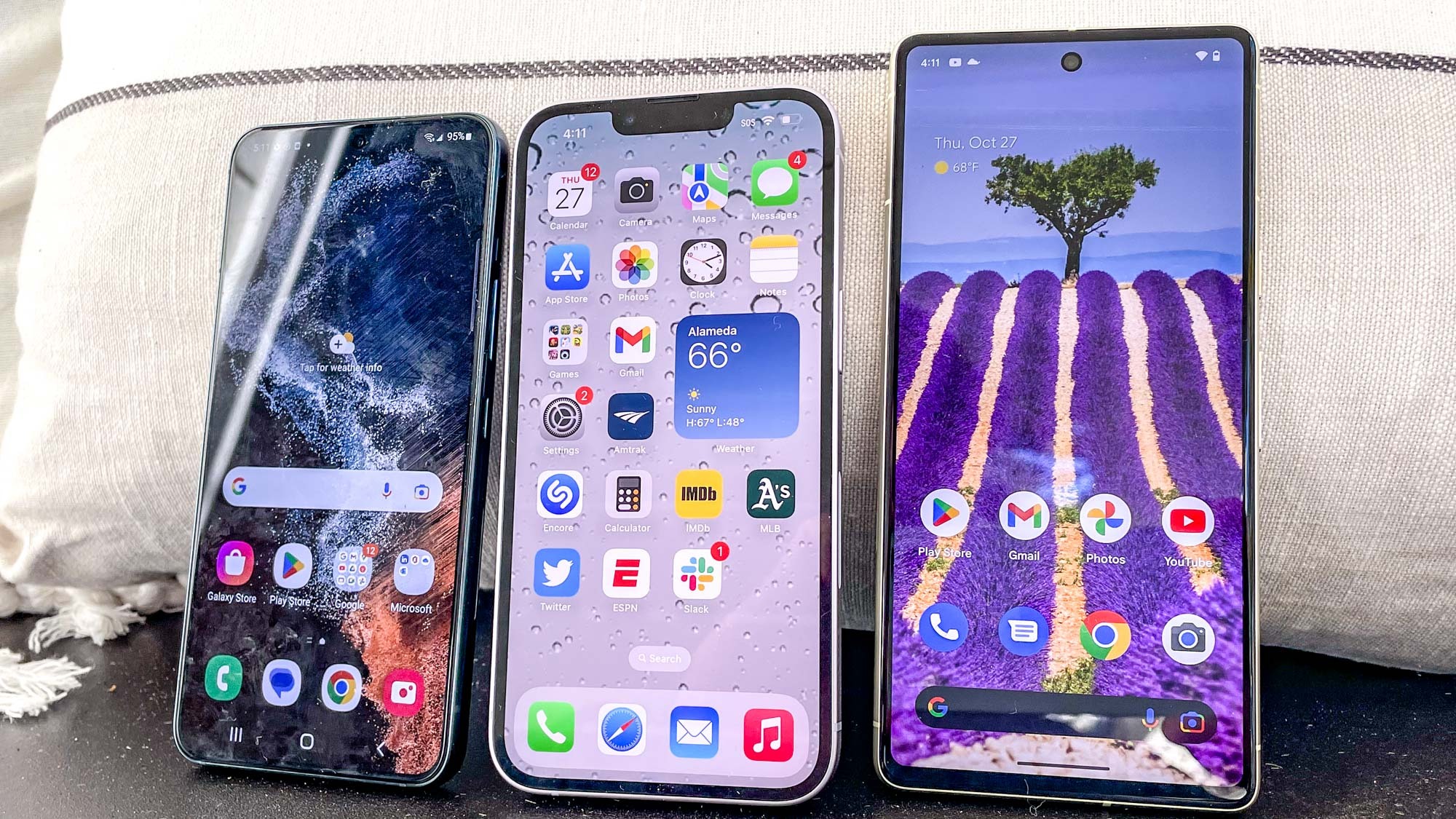
The Pixel 7 may have the largest dsiplay but that doesn't translate to the sharpest resolution. At 2400 x 1080, the Pixel 7's OLED panel delivers 416 pixels per inch (ppi). That trails the Galaxy S22's 425 ppi and the 460 ppi that the iPhone 14 offers. In fact, the iPhone boasts the sharpest resolution at 2532 x 1170.
All three phones sport thin bezels around screens that stretch from edge to edge, though the Pixel 7's bottom bezel is slightly chunkier than what you'll find on the S22 and iPhone 14. The Google and Samsung phones each feature cut-outs for their front cameras smack dab in the center of their displays. The iPhone 14 continues to feature a notch that houses the front camera and the sensors needed for Apple's Face ID unlocking feature. (Only the iPhone 14 Pro models have done away with the ditch.) That further reduces the amount of useable screen space on the iPhone 14.
Winner: Google Pixel 7
iPhone 14 vs. Galaxy S22 vs. Pixel 7: Refresh rate
Refresh rate has become an increasingly important aspect for smartphone displays. In recent years, phone makers have started adding displays capable of supporting higher refresh rates, so that activities like scrolling run more smoothly. Games that support fast refresh rates can offer more immersive graphics as well.
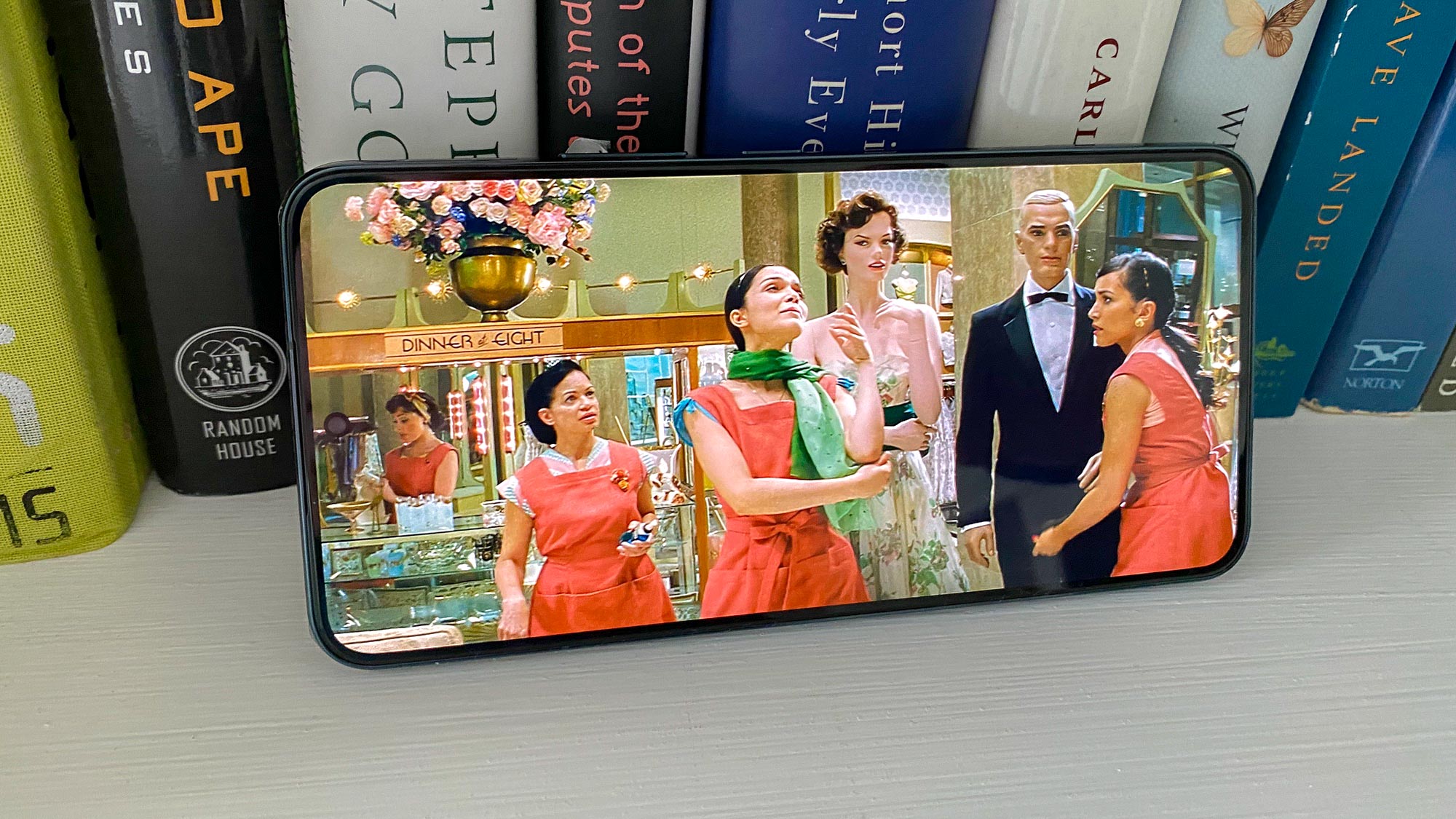
High refresh rates aren't the only factor to consider, though. Higher-end phones can scale down their refresh rate, too, when on-screen activity is more static. The slower the refresh rate, the less power is needed, so refresh rates that can adapt on the fly can reduce the strain on a phone's battery life.
There's a clear stratification among these phones when it comes to refresh rates. The Galaxy S22 is the best of the bunch, with the ability to scale up to 120Hz. For times when those faster refresh speeds aren't need, the S22's panel can drop down to 48Hz. If you want an even wider range of refresh rates, consider the $1,199 Galaxy S22 Ultra, which scales between 1Hz and 120Hz depending on conditions.
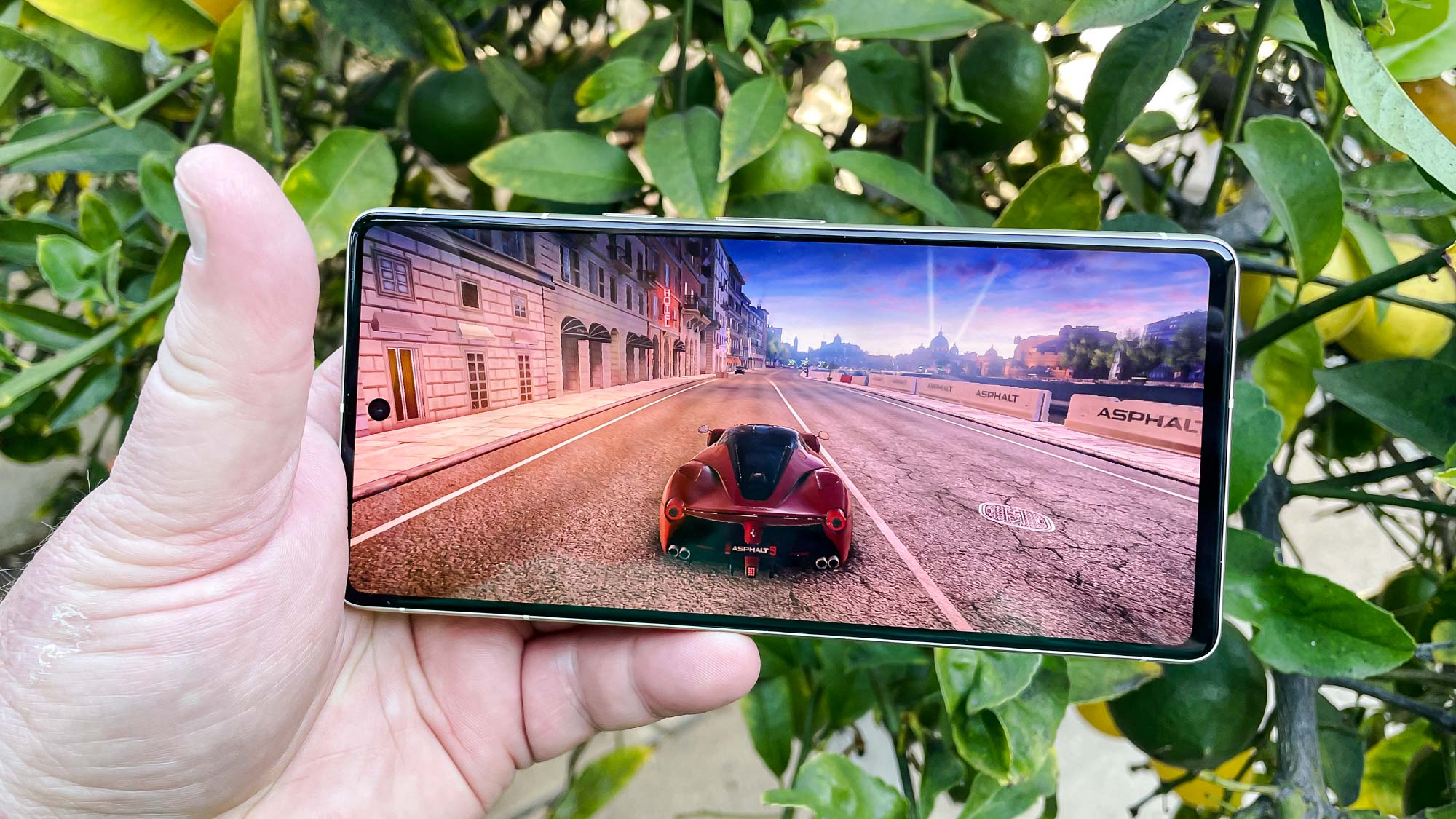
The Pixel 7's adjustable refresh rate is a little more limited. When needed, it can scale up to 90Hz, but the rest of the time, Google's phone has a 60Hz display. To match the Galaxy S22's max refresh rate, you'd have to pay up for the $899 Pixel 7 Pro.
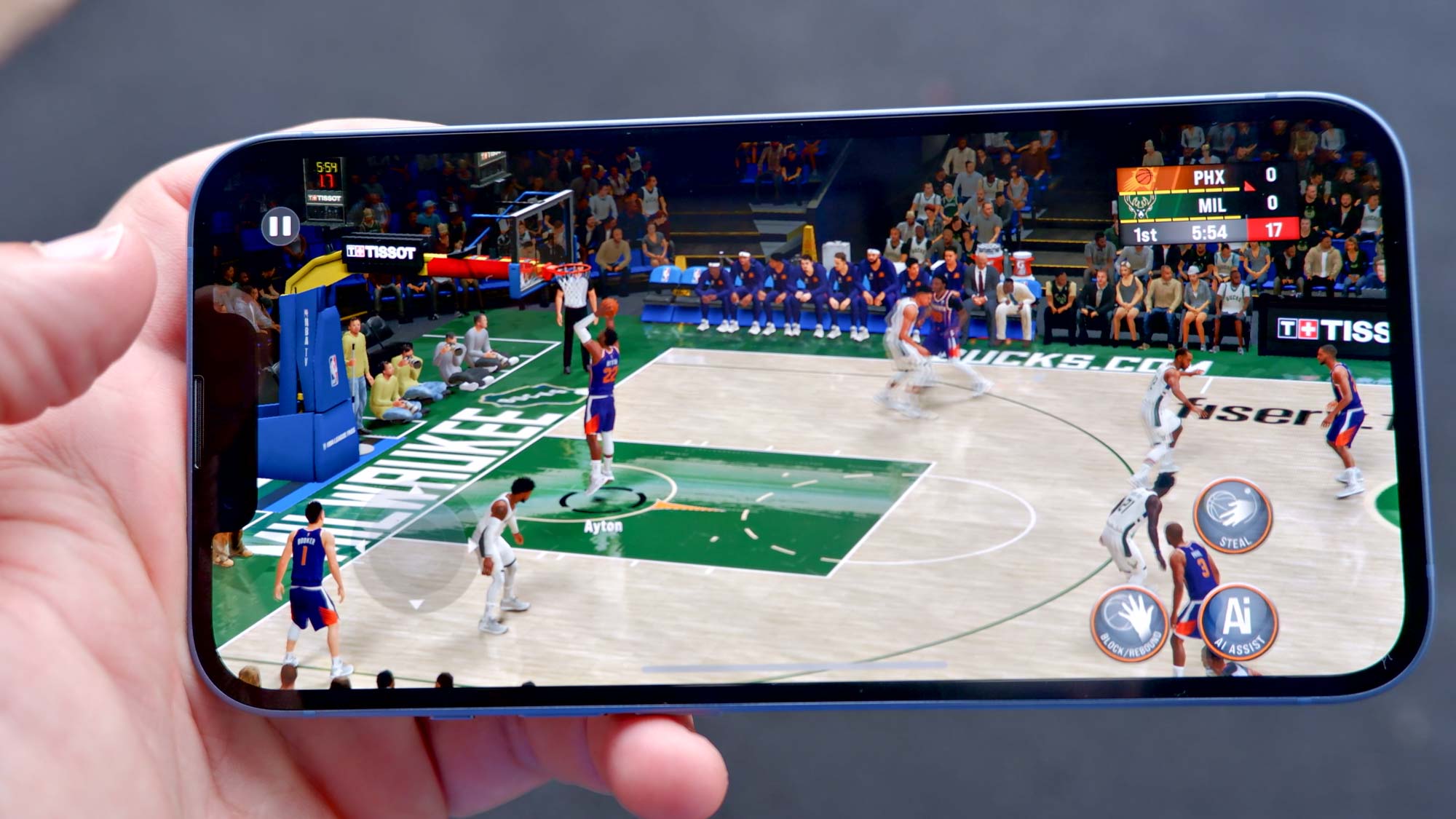
Still, the Pixel 7's 90Hz refresh rate is better than what Apple has to offer with the iPhone 14. Apple's entry-level flagship has a fixed 60Hz rate, as the phone maker continues to treat fast refresh rates as a feature limited to its Pro models.
Winner: Samsung Galaxy S22
iPhone 14 vs. Galaxy S22 vs. Pixel 7: Brightness
Phone makers seem to be placing a greater emphasis on brightness these days, and it's not hard to see why. A brighter screen means a more enjoyable experience with your phone — and less squinting when you need to look at the screen in bright sunlight.
The three phones we're looking at all make big brightness claims, with Apple saying the iPhone 14 can hit 800 nits of maximum brightness and 1,200 nits of peak brightness with HDR turned on. The Pixel 7 can hit a peak brightness of 1,400 nits, according to Google, while Samsung lists the S22's peak brightness at 1,300 nits.
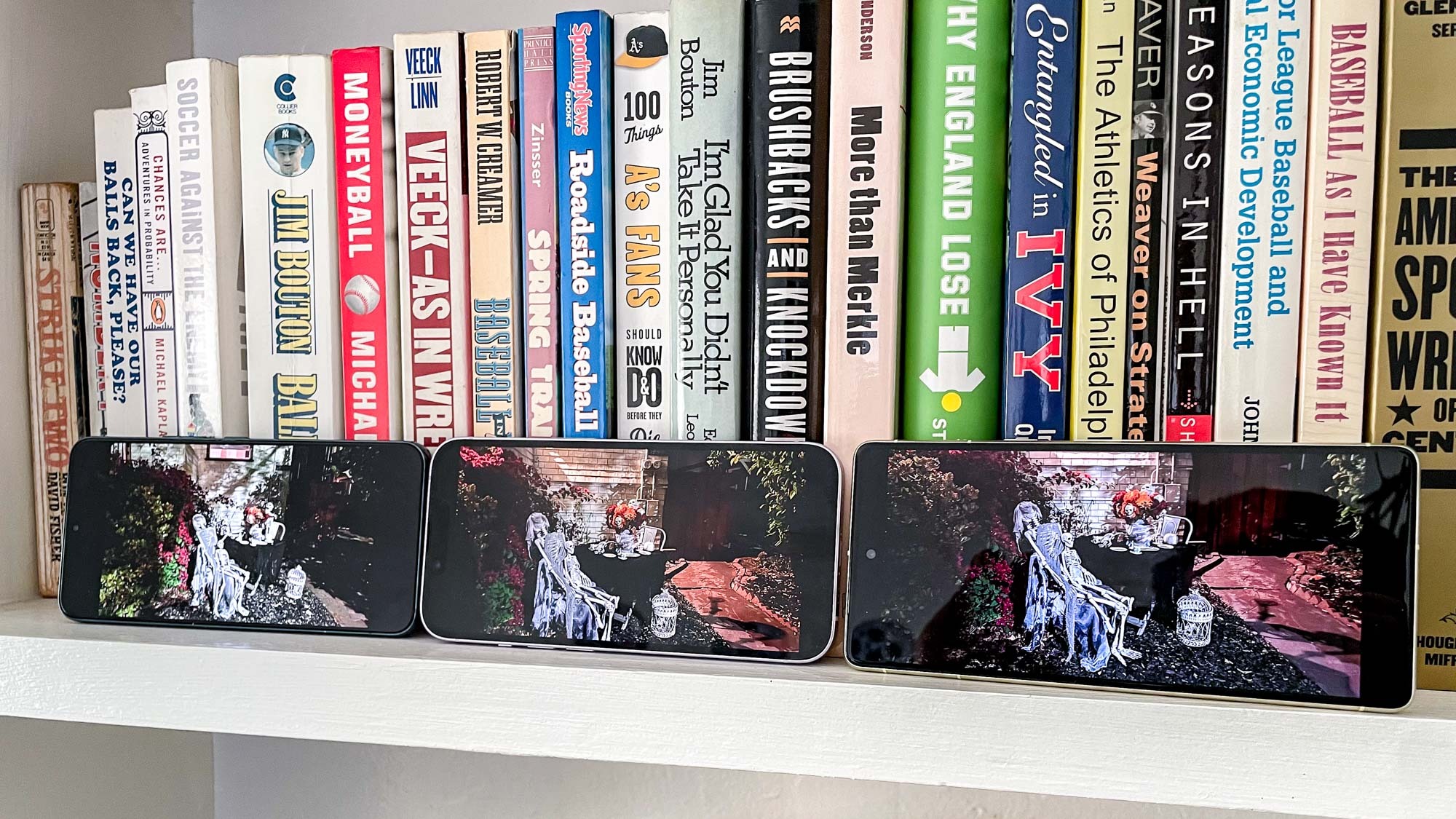
In our tests, the Galaxy S22 came the closest to its maker's claims, as we recorded peak brightness of 1,152 nits with HDR turned on. The Pixel 7 got as high as 926 nits while the iPhone 14's brightness reading was 757 nits. All those figures came with adaptive brightness turned on.
In a less scientific result, I stood in my front yard on a sunny if partly cloudy California day with a web browser open on all three phones. I then adjusted the brightness slider until the text on an article became legible. There's a limitation to this — the Galaxy S22 and iPhone 14 don't show percentages on their display slider like the Pixel 7, so any comparison is an estimate. But it looked to me like the Galaxy S22 display slider was around 70% while the iPhone 14 was closer to 75%; the Pixel 7 slider hit 84% when the screen became bright enough for me to read.
Maxing out the brightness on each phone mirrored these results. While all three displays were visible with brightness set to 100%, the Galaxy S22 was the easiest to read, followed by the iPhone 14 and then the Pixel 7. Turning on the Galaxy S22's Extra Brightness feature in Settings gave the screen an additional boost that the iPhone and Pixel couldn't match.
Winner: Samsung Galaxy S22
iPhone 14 vs. Galaxy S22 vs. Pixel 7: Colors
All three phones use OLED panels, which is great news. (It's also a fairly recent development — it wasn't that long ago that Apple was still turning to LCD for the screens on its entry-level iPhones.) That means truer blacks, better contrast and colors with more pop than you might see on an LCD panel.
| Row 0 - Cell 0 | iPhone 14 | Samsung Galaxy S22 | Google Pixel 7 |
| Screen size | 6.1 inches | 6.1 inches | 6.3 inches |
| sRGB % | 117.4% | 110% | 109.3% |
| DCI-P3 % | 83.1% | 77.9% | 77.4% |
| Delata-E rating | 0.25 | 0.22 | 0.28 |
The metrics indicate that Apple offers the more colorful display, as the iPhone 14 leads the Galaxy S22 and Pixel 7 in capturing more the of sRGB and DCI-P3 color spectrums. Note that the Galaxy S22 numbers shown above were recorded with the display set in Natural mode. The Galaxy S22 also offers a Vivid mode that pumps up the colors dramatically — its sRGB score skyrockets to 210.4% in Vivid — but at the expense of accuracy.
Speaking of accuracy, the Galaxy S22 has the best Delta-E rating, indicating that its colors are truer than what the other two phones offer. At 0.22 in Natural mode, the Galaxy S22 finishes slightly ahead of the iPhone 14's 0.25 score. (Numbers closer to zero are better on this test.) Of course, if you switch over to Vivid mode, the Galaxy S22's Delta-E score hits 0.33. The Pixel 7 brings up the rear with a 0.28 score.
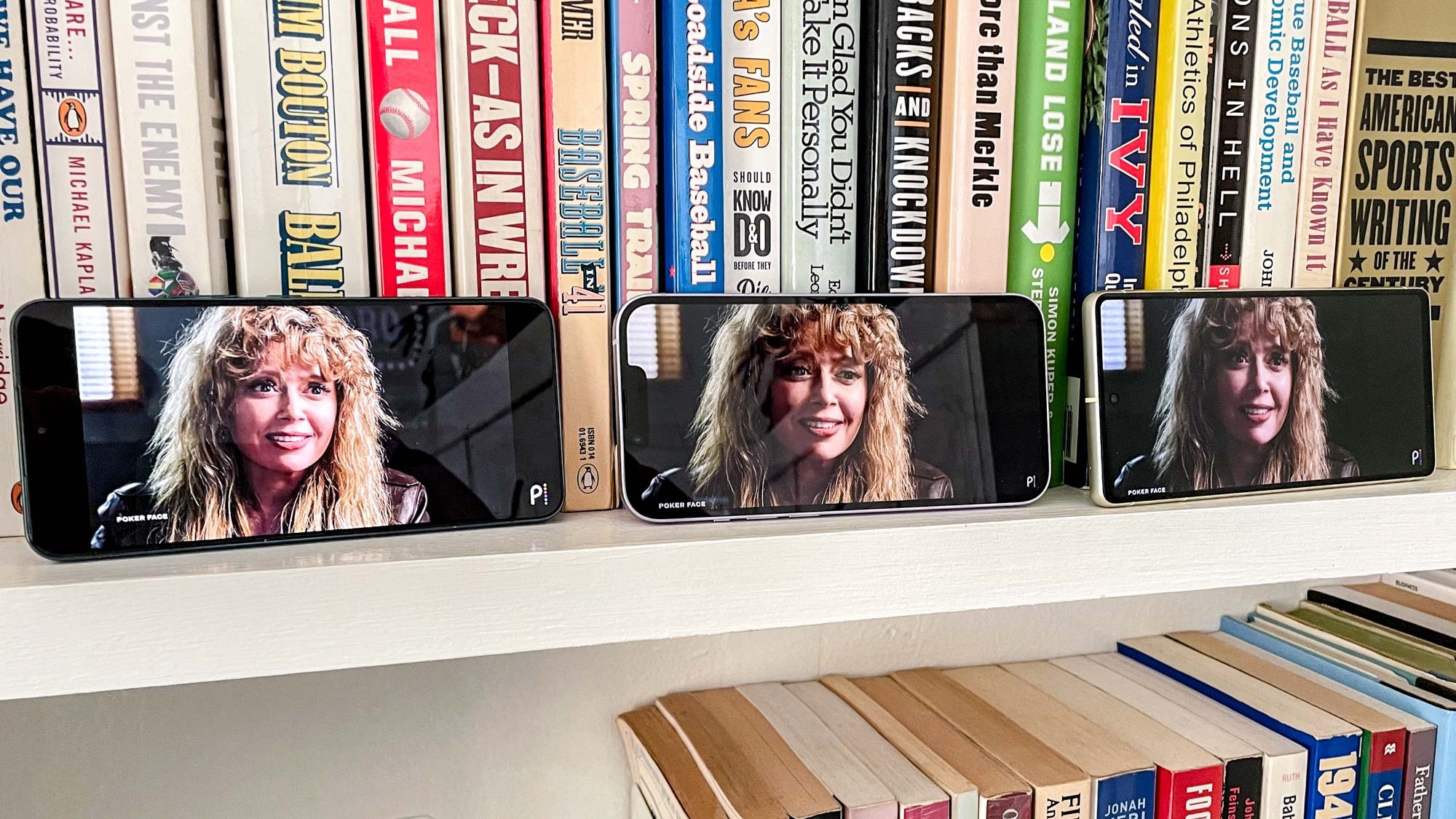
Watching the teaser trailer for Poker Face on all three phones, I felt like each one handled colors about the same, from Adrien Brody seedy turquoise jacket to Ron Perlman's ominous all-black outfit. If any phone had the edge here, it was the way the iPhone faithfully recreated the shadows in Rian Johnson's upcoming mystery show.
Similarly, in the Black Panther: Wakanda Forever trailer, the white of Angela Bassett's robe seemed truer than the off-white color on the S22 and Pixel 7 screens. The surging surf looked vivid on all three displays, though I think the Pixel 7 handled battle sequences fairly adeptly.
I also played some games on each phone to see how their displays handled detailed graphics. You won't be disappointed with how a game like PUBG Mobile looks on any of these phones, though I do think details like the the bricks of buildings and the grass and trees around various battlefields looked their sharpest on the Pixel 7's screen.
Winner: iPhone 14
iPhone 14 vs. Galaxy S22 vs. Pixel 7: Verdict
You can tell that all three phone makers have put a great deal of effort into delivering top notch displays with their latest smartphones. Indeed, when we reviewed the iPhone 14, Galaxy S22 and Pixel 7, we counted the display of each phone among their best features.
But someone's got to win our display face-off, and to my eyes, that's the Galaxy S22. Samsung's phone has the brightest display, the fastest refresh rate and the most accurate colors, even if the iPhone 14's colors are a tad more detailed. I also like that the Galaxy S22's camera cutout gives you a full screen to work with, as opposed to the notch that dips into the iPhone 14's display. In fact, I happen to think the display was one of the best Galaxy S22 features overall.
You'll be pleased with the screens on either the iPhone 14 or the Pixel 7, should you pick those phones. The iPhone 14 handles color particularly well, and both it and the Pixel are bright enough to use in direct sunlight. But in a very tight competition, the Samsung Galaxy S22 stands out as the display to beat.
Sign up to get the BEST of Tom's Guide direct to your inbox.
Get instant access to breaking news, the hottest reviews, great deals and helpful tips.
Philip Michaels is a Managing Editor at Tom's Guide. He's been covering personal technology since 1999 and was in the building when Steve Jobs showed off the iPhone for the first time. He's been evaluating smartphones since that first iPhone debuted in 2007, and he's been following phone carriers and smartphone plans since 2015. He has strong opinions about Apple, the Oakland Athletics, old movies and proper butchery techniques. Follow him at @PhilipMichaels.

